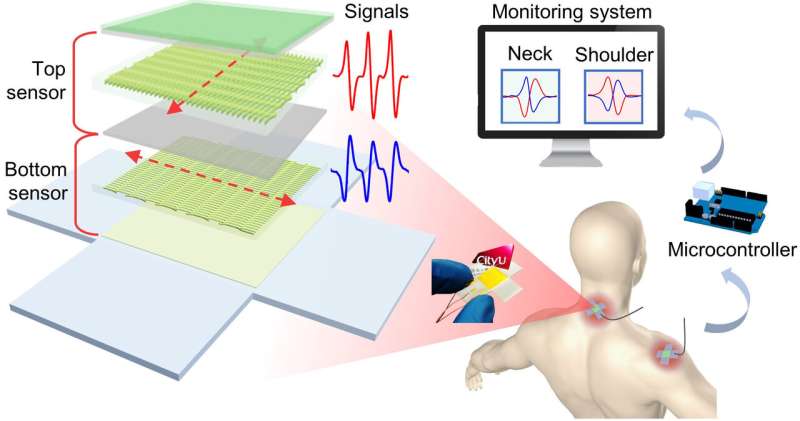March 15, 2021 report
Kirigami inspired device to monitor joint motion for sedentary workers

A team of researchers affiliated with several institutions in China has developed a kirigami-inspired device to monitor joint motion for sedentary workers. In their paper published in the journal Science Advances, the group describes how their device works and how it performed when tested.
Prior research has shown that working long hours sitting in front of a computer can be a health hazard. In addition to promoting obesity, eyestrain and related ailments, hours-long computer use can lead to musculoskeletal disorders such as chronic pain in the shoulders or neck. Doctors suggest people get up from the computer periodically to move around as a way to prevent joint and muscle stress. Quite often, however, the nature of computer work makes it difficult for workers to feel the passage of time, and thus to note how long they have been working. Prior research has also shown that part of the problem is related to simple inactivity of the joints. In this new effort, the researchers have developed a wearable device that alerts a computer user to periods of inactivity for the neck and shoulder joints.
The device was inspired by kirigami, a type of paper art similar to origami that uses both folding and cutting to create unique paper shapes. The device is a small sensor that can adhere to the skin. The sensor is a sandwich design with dual layers of piezoelectric materials that are used to power other layers that monitor changes or compressions. The devices are placed on the back of the neck where the head meets the shoulders and on the top of each shoulder. Each of the devices also has a micro-transmitter that sends signals to a computer application. In addition to monitoring joints for motion, the devices also run clocks to keep track of sedentary periods. If any of the devices find that a joint has not been moved for a 10-minute interval, it sends a signal to the computer application, which creates a popup message alerting the user to move around.
The researchers have applied for a patent on their system and are working on plans to license it for others to sell.
More information: Ying Hong et al. Highly anisotropic and flexible piezoceramic kirigami for preventing joint disorders, Science Advances (2021). DOI: 10.1126/sciadv.abf0795
© 2021 Science X Network




















